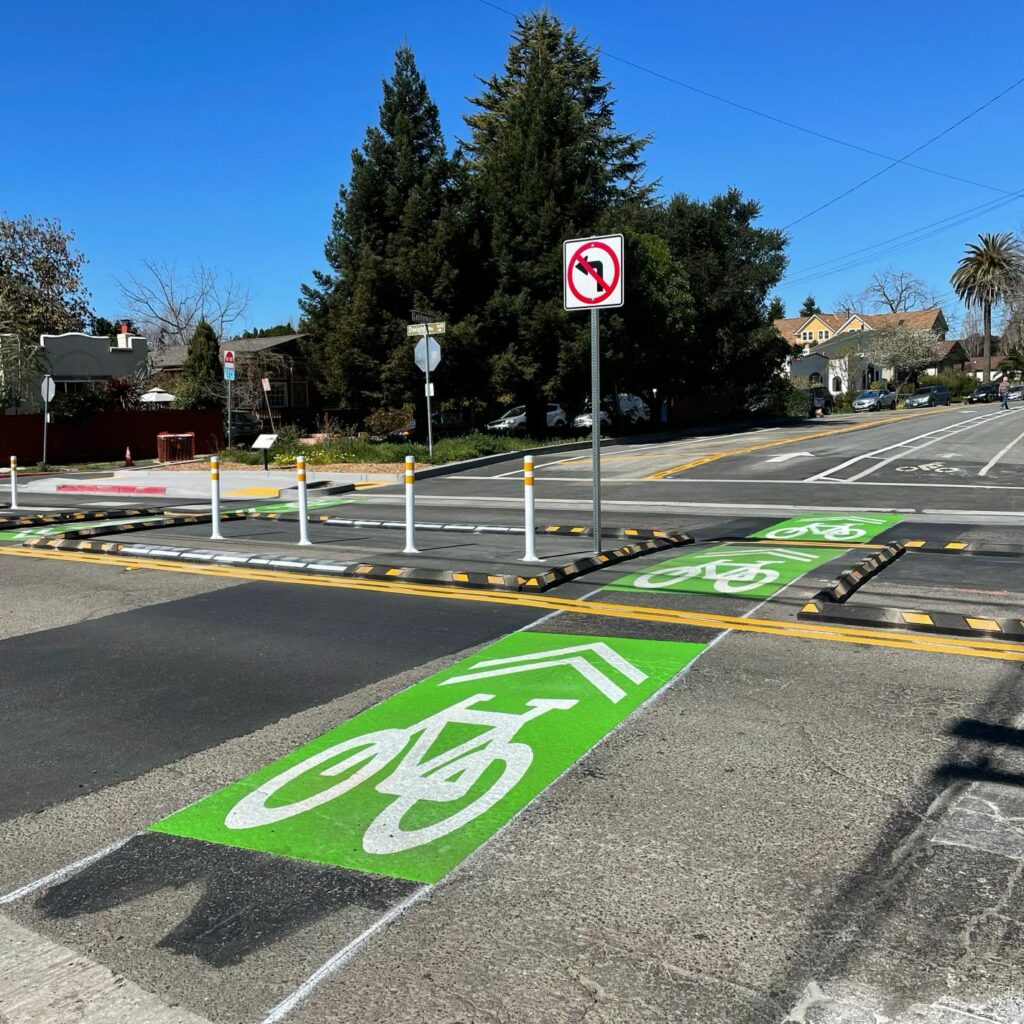
With more and more bikes on the road, it has never been more important for cities to be bike-friendly. Properly designed bicycle infrastructure plays a vital role in preventing accidents, ensuring the safety of cyclists, and encouraging more people to choose cycling as a sustainable and healthy way to get around. Below are ten ways cities can help reduce collisions between bikes and cars.
Separated Bike Lanes
One of the most effective ways to prevent accidents is the implementation of separated bike lanes. These dedicated lanes physically separate cyclists from motor vehicles, reducing the risk of collisions and creating a safer space for cyclists to ride. Green paint serves as a visual cue to let cyclists know where to ride and drivers where to avoid.
Intersection Design
Intersections can be dangerous for cyclists, especially when they interact with turning vehicles. Proper intersection design, including features such as bike boxes, protected signal phases, and dedicated bike signalization, can significantly improve safety and prevent accidents at these critical points.
Clear Signage and Markings
Well-placed and clear signage, along with visible markings, can go a long way in preventing accidents. Predictability creates safety. Signs should tell drivers and cyclists what to do and what to expect. We do not see what we are not looking for, but with adequate warning everyone is safer.
Bicycle-Specific Traffic Signals
Bicycle-specific traffic signals provide cyclists with a clear indication of when to proceed, yielding, or turn. These signals help to minimize conflicts between cyclists and motorists, improving safety and reducing the risk of accidents.
Protected Intersections
Protected intersections are designed to enhance safety by physically separating cyclists from vehicles, employing design elements such as corner refuge islands, setback bike crossings, and improved sightlines. Raised crossings help create a speed bump at critical intersections and serve as a visual indicator for cars to yield to bikes and pedestrians.
Bicycle Parking Facilities
Properly designed and conveniently located bicycle parking facilities can encourage more people to choose cycling as a transportation option. If cyclists worry their bike will be stolen, they won’t ride even if the roads to their destination have great bike lanes. Bike storage is a part of getting people out and riding safely.
Education and Outreach
Effective bicycle infrastructure is not limited to physical elements but also encompasses education and outreach programs. Raising awareness through events, PSAs, and proper signage helps educate cyclists and drivers on how to use new pieces of infrastructure.
Case Studies and Success Stories
Sharing real-life case studies and success stories can demonstrate the positive impact of well-designed bicycle infrastructure in accident prevention. Taking the time to gather data helps cities address their actual issues. If you don’t know the speed of cars or the number of cyclists on a given road, you cannot effectively plan. Case studies lead to practical solutions that address the needs of all citizens.
Community Engagement and Advocacy
Engaging the community and advocating for improved bicycle infrastructure is crucial in creating safer roads for cyclists. Policy is made by the people who show up. If your city is considering bike-friendly infrastructure, email your city council members, or show up to speak in favor of an issue.
Future Developments and Innovations
The world of bicycle infrastructure is constantly evolving, with new developments and innovations aimed at improving safety and reducing accidents. Looking to the Netherlands and Denmark can help American cities get ideas from the forefront of bike infrastructure.

